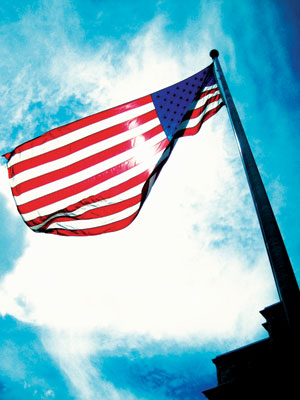All Nonfiction
- Bullying
- Books
- Academic
- Author Interviews
- Celebrity interviews
- College Articles
- College Essays
- Educator of the Year
- Heroes
- Interviews
- Memoir
- Personal Experience
- Sports
- Travel & Culture
All Opinions
- Bullying
- Current Events / Politics
- Discrimination
- Drugs / Alcohol / Smoking
- Entertainment / Celebrities
- Environment
- Love / Relationships
- Movies / Music / TV
- Pop Culture / Trends
- School / College
- Social Issues / Civics
- Spirituality / Religion
- Sports / Hobbies
All Hot Topics
- Bullying
- Community Service
- Environment
- Health
- Letters to the Editor
- Pride & Prejudice
- What Matters
- Back
Summer Guide
- Program Links
- Program Reviews
- Back
College Guide
- College Links
- College Reviews
- College Essays
- College Articles
- Back
The Safe Space Disgrace
How do you react when a person verbally offends you? Do you act mature by discussing the problem with them, or by simply ignoring them? Maybe you get aggravated, and respond by shouting at them? Or do you run off to a place where that person isn’t allowed to speak, a place filled with cookies, playdoh, pillows, coloring books and even videos of frolicking puppies?
Although the last option may sound like the choice a toddler would make, it is now seen on college campuses throughout the whole country. Known as “safe spaces”, these areas at colleges and universities were created by easily offended students who wanted to keep so-called “marginalized” groups of people away from the harmful words of others.
But this isn’t some fairytale.
What may appear at first glance to be a thoughtful gesture, is precisely a coping mechanism for those who refuse to listen to any opposing opinions, and it lets full-grown adults be treated as sheltered children. Safe spaces are a threat to keep in this country, and schools need to remove them if they wish for their students to grow intellectually and learn to deal with situations that they aren’t completely comfortable in.
However many people argue that these spaces are also for those who have mental illnesses, such as PTSD, anxiety, and trauma from past abuse, as well as minority groups who, they claim, are deemed insignificant by a large population of students.
But mental illnesses are serious problems, and students need to seek professional help from an on-campus counselor or a therapist, instead of discarding others’ freedom of speech in order to keep themselves safe. And thankfully, minorities are accepted more now than ever before. Yes, there are some people who will disagree with what they say, and sometimes pure bigotry is involved, but this is exactly the reason why college students need to respectfully confront these opinions and try to convince the others to believe in what they say, rather than shying away. Otherwise, as Judith Shulevitz’s article “In College and Hiding From Scary Ideas” from the New York Times puts it, “They’ll be unprepared for the social and intellectual headwinds that will hit them as soon as they step off the campuses [. . .] If they want to change the world, how will they learn to persuade people to join them?” (Shulevitz, par. 16). Colleges are used as education to grow into intelligent, mature adults. But this cannot be achieved with safe spaces that exclude popular opinions often seen off campuses.
Students will benefit deeply if American colleges and universities prohibit safe spaces altogether, as they will understand how to accept differences in opinions, work together and learn from one another—in other words, they will start acting like adults.
Achieving this isn’t as infeasible as it may seem. In fact, The University of Chicago, ranking 3rd out of all United States universities, refuses to allow safe spaces. Early this fall, a letter from them was published, where John Ellison, Dean of Students, wrote with dignity, “Our commitment to academic freedom means that we do not support so-called “trigger warnings”, we do not cancel invited speakers because their topics might prove controversial and we do not condone the creation of intellectual safe spaces where individuals can retreat from ideas and perspectives at odds with their own,” (Jaschik, par. 3).
The time to speak up is now. Safe spaces need to be removed if schools wish for their students to truly learn—about the real world. Whether schools keep safe spaces or exterminate them is solely up to whether Americans educate each other on the importance of free speech, as well as growth and learning to act like an adult. After all, this great country thrives on our differences.
Works Cited:
Shulevitz, Judith. "In College and Hiding From Scary Ideas." The New York Times. The New York Times, 21 Mar. 2015. Web. 01 Dec. 2016.
Jaschik, Scott. "U of Chicago Professors Issue Letter on Safe Spaces and Trigger Warnings." U of Chicago Professors Issue Letter on Safe Spaces and Trigger Warnings. N.p., 14 Sept. 2016. Web. 01 Dec. 2016.

Similar Articles
JOIN THE DISCUSSION
This article has 0 comments.

Thank you for taking the time to read my thoughts! As a highschool freshman in 2016-2017, I've learned it can be quite difficult to discuss my strong views on politics, when it comes to both social issues and economic issues - especially with my communication "obstacles", as I've began to call them.
However I am not asking for sympathy; instead I've come to realize that I can reach a much larger and more varied audience online than in the classroom.
If you'd like to voice your opinion on my piece as well, or have any questions, feel free to leave a comment!
- Julia T.
P.S. This essay was written for my English class several months back, and therefore I'd like to note how optimistic I am to see some colleges/universities starting to push back/flat-out say "no" to safe spaces! (However the issue still heavily remains...)